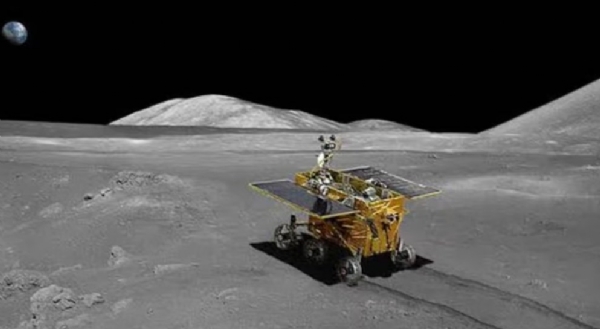Chandrayaan 3's exciting Discovery on the Lunar Surface! Pragyan rover detects oxygen, other elements on Moon
30 Aug 2023 12:41:53
Chandrayaan-3’s Pragyan rover has found sulphur on the Moon's south pole region, ISRO said on Tuesday. The discovery was made using the rover's Alpha Particle X-ray Spectrometer (APXS).

Sulphur is a relatively rare element on the Moon. Its presence in the south pole region is significant because it could be a sign of the presence of water ice. Water ice is thought to be trapped in the permanently shadowed craters of the south pole region.
“Laser-Induced Breakdown Spectroscope (LIBS) instrument onboard the Rover unambiguously confirms the presence of Sulphur (S) in the lunar surface near the south pole, through first-ever in-situ measurements. Al (Aluminum), Ca (Calcium), Fe (Iron), Cr (Chromium), Ti (Titanium), Mn (Manganese), Si (Silicon), and O(Oxygen) are also detected, as expected. Search for Hydrogen (H) is underway,” ISRO posted on X.
BIG BREAKING NEWS - Chandrayaan 3 detects Oxygen on moon🔥🔥. Hunt for hydrogen is underway.
— Times Algebra (@TimesAlgebraIND) August 29, 2023
Chandrayaan 3 also confirms the presence of sulphur in the lunar surface near the south pole. World is shocked to see MIRACLES ON MOON ✨.
Silicon, Calcium, Iron, Chromium, Titanium,… pic.twitter.com/tpjNBHWHWQ
The Laser-Induced Breakdown Spectroscopy (LIBS) instrument onboard Chandrayaan-3 Rover has made the first-ever in-situ measurements on the elemental composition of the lunar surface near the south pole. These in-situ measurements confirm the presence of Sulphur (S) in the region unambiguously, something that was not feasible by the instruments onboard the orbiters.
LIBS is a scientific technique that analyzes the composition of materials by exposing them to intense laser pulses. A high-energy laser pulse is focused onto the surface of a material, such as a rock or soil. The laser pulse generates an extremely hot and localized plasma. The collected plasma light is spectrally resolved and detected by detectors such as Charge Coupled Devices. Since each element emits a characteristic set of wavelengths of light when it's in a plasma state, the elemental composition of the material is determined.
Preliminary analyses, graphically represented, have unveiled the presence of Aluminum (Al), Sulphur (S), Calcium (Ca), Iron (Fe), Chromium (Cr), and Titanium (Ti) on the lunar surface. Further measurements have revealed the presence of manganese (Mn), silicon (Si), and oxygen (O). Thorough investigation regarding the presence of Hydrogen is underway.